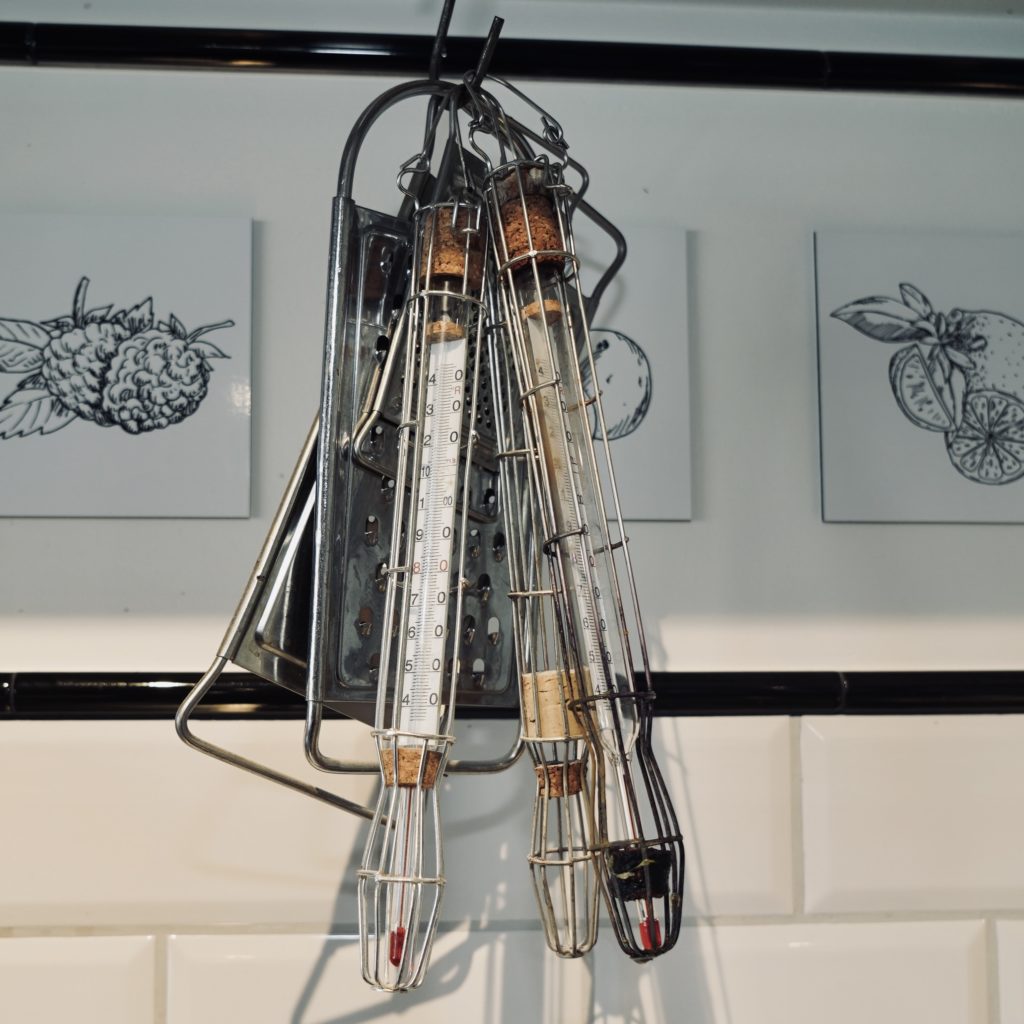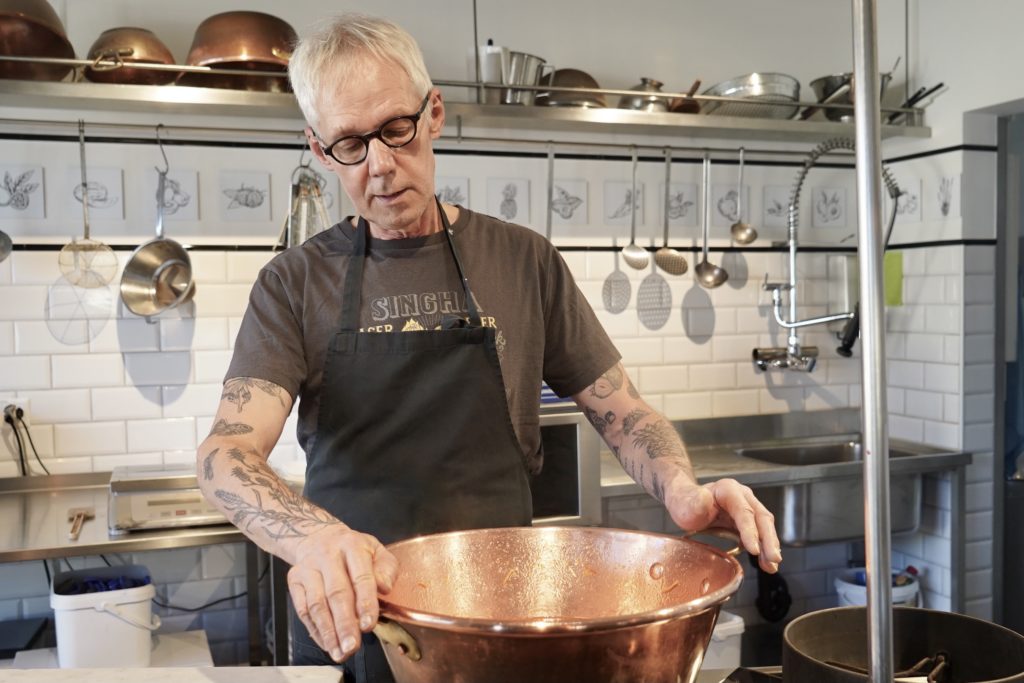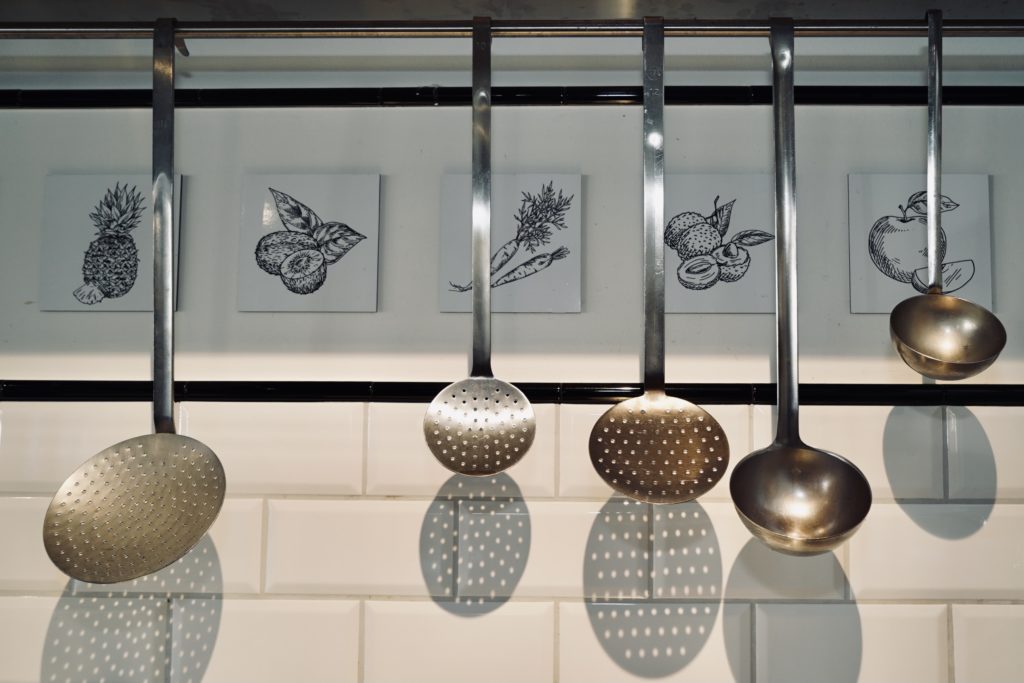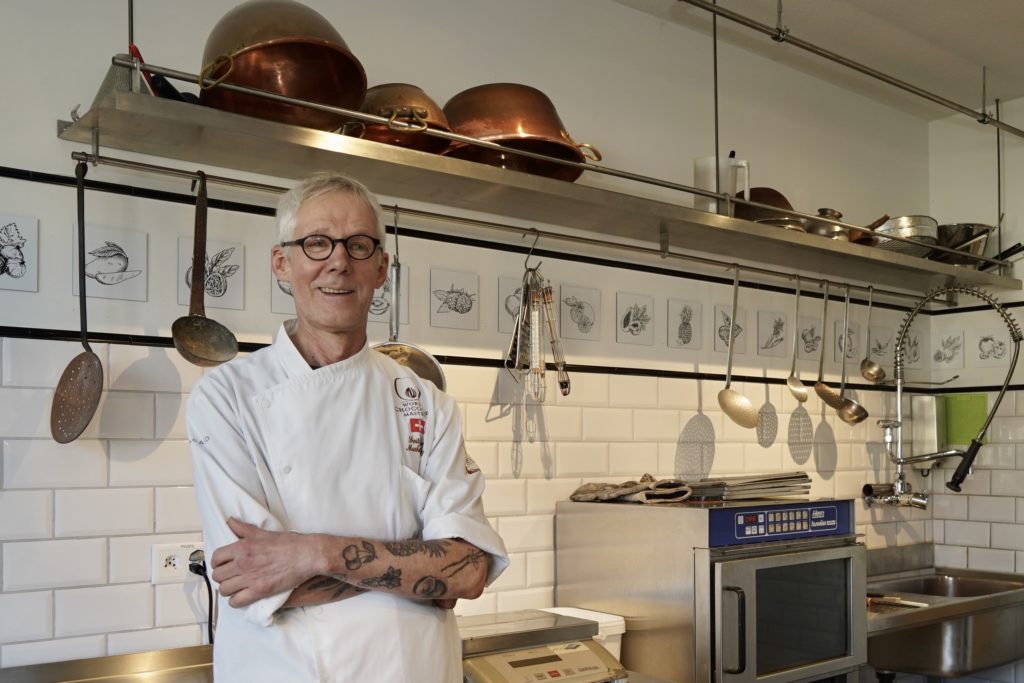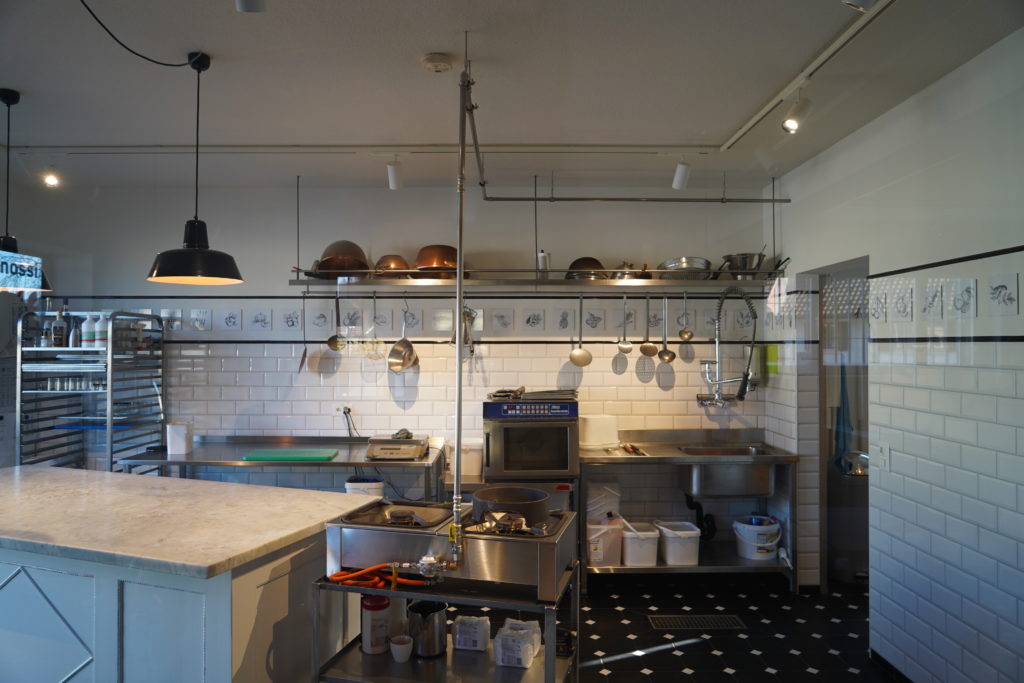‘Jam is the school of patience’
Konfi Manufaktur
#jam #switzerland
Markus Kunz comes from a family of bakers. As a trained confectioner, he and his wife were the third generation to run the family business, which has grown to an impressive size. Over the years Kunz has received numerous awards for his creations. For the master confectioner, these awards were proof that “you can also operate in the premium segment in the countryside.”
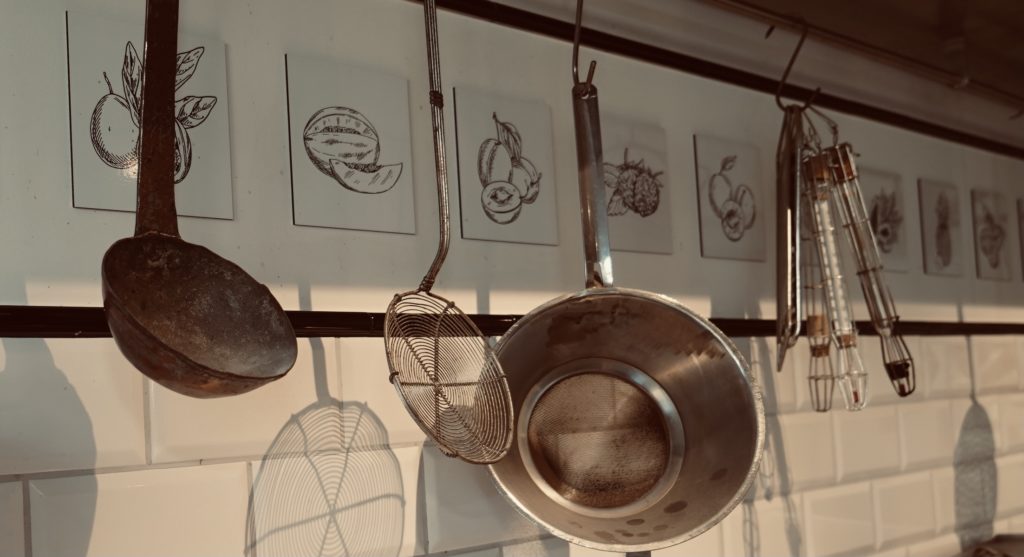
In order to be able to continuously develop himself and the product range, he visited his professional colleges at home and abroad at regular intervals. During one of these visits, he looked over the shoulder of a renowned French professional colleague who makes jam, among other things. ‘I thought this was a captivating idea,’ Kunz recalls. However, he didn’t expect too much demand for it in his own sales outlets: “I assumed that most people would either buy jam in the supermarket or prepare it themselves according to their own family recipe.” But the entrepreneur was wrong on this point: “My jams were quickly very well received.”
The big breakthrough came when Markus Kunz presented his jams at a gastronomy fair. A few years later, some renowned Swiss 5-star hotels were already among his customers.
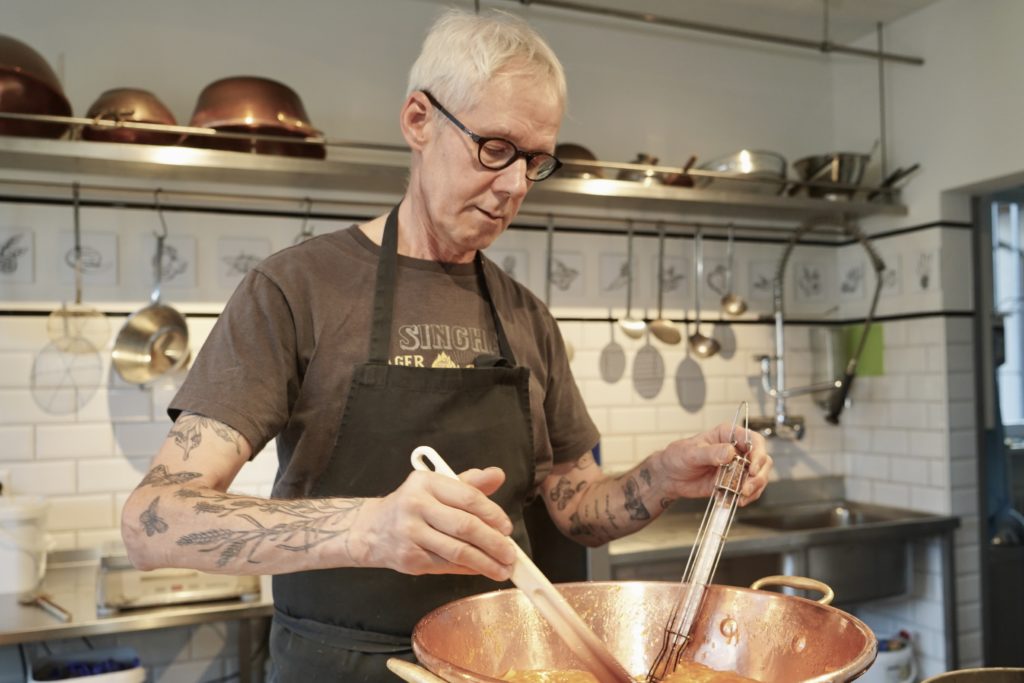
An impressive variety
At peak times Markus Kunz produced 400 varieties of jam. ‘Today, I have limited myself to 300 kinds,’ he says smiling. And those who thought that such an assortment is only possible with a large staff and appropriate machines is mistaken. The jams are handmade by the master himself. Just the packing and labelling of the jam jars is done by part-time employees and his wife deals with the administration side of things.
What started small has become the 66-year-old’s new purpose in life. ‘Since selling the family business two years ago, I have devoted myself entirely to my jam factory,’ Kunz says as fruit and sugar come to the boil in a copper pot. A former post office in the middle of the village Herznach serves as his production site. The original counter hall is divided into a small village café and Kunz’s kitchen. A glass partition wall allows visitors to watch the confectioner at work.
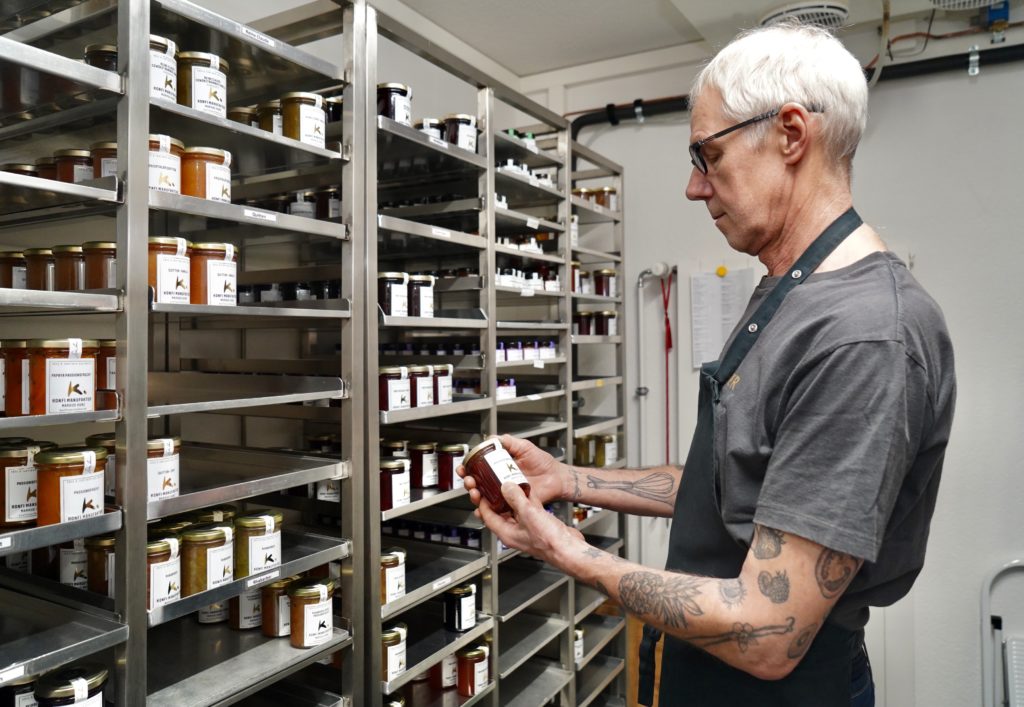
An open approach to the recipe for success
And what is the hallmark of Markus Kunz’s jam? ‘I use regional fruit as far as possible and only fully ripened fruit of high-quality, add little sugar and spread the production over at least two days,’ explains the confectioner. So on the first day, Kunz mixes the finely chopped fruit with a little sugar and lets the mixture macerate for about an hour. He then gently boils up the mixture. Markus Kunz then either lets this preliminary stage rest for a day or freezes it for later processing.
On the second production day sugar is added to the mixture in careful doses. ‘Only 400g sugar, including fructose which I measure, is added to one kilo fruit,’ Kunz explains. The jam is then briefly boiled again.
Depending on the kind of fruit that is being used the confectioner adds a measured amount of lemon juice and natural apple pectin. He never uses preserving sugar. ‘That would take away my ability to give the jams the decisive finishing touch.’ Preservatives and flavorings are not to be found in Kunz’s creations.
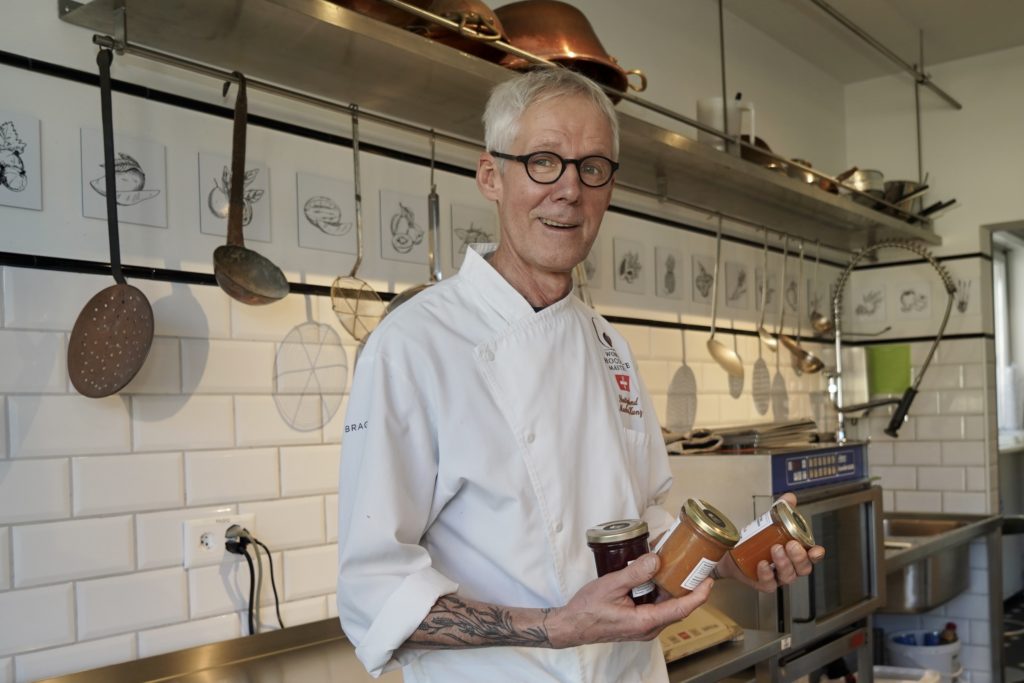
Pure varieties and blends
And which of the 300 varieties sell best? “Among the single-variety jams, it’s strawberry, bitter orange and apricot,” says Kunz. While in the blends, plum elderberry, quince vanilla and “Frauentraum” (women’s dream) are ahead. The “Frauentraum” is an assemblage of raspberries, currants, lychee and rose petals. Kunz says, “In combinations, fruits that ripen at the same time generally go well together.”
Watching Markus Kunz at work, you can sense that mindful handling of the various ingredients is close to his heart. In addition, he takes the necessary time for each step: “First, the fruits have to ripen sufficiently and the preparation by hand is also not quick, quick.” Markus Kunz adds with a smile, “Jam is the school of patience.”

If you now feel like making jam yourself, you can read the master’s tricks and tips and 80 of his easy-to-make recipes in the recently published book “Konfi – die besten Rezepte für das ganze Jahr.” The book is written in German.
ISBN 978-3-906869-31-5
